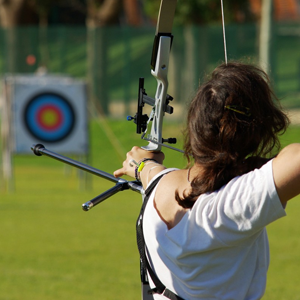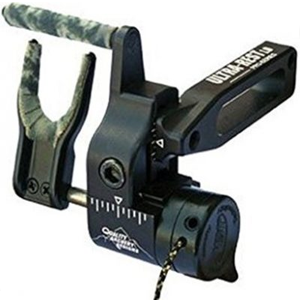Bow strings must be repaired, replaced and maintained all the time. The string is the most important element of a bow, and without a properly conditioned string, the bow won’t function appropriately. Many recreational archers and bow hunters are figuring out how to repair a bowstring and service a bow since specialty shops are reducing in number.
Bowstring repairing skills are essential in the home and also in the field. Learning how to repair broken bowstrings can either break or make a hunt. In this article, we will show you the proper way to repair your bowstring and also let you know the right time to replace your bowstring. So read on and learn!
Bowstring Repairing Guidelines
Before repairing your bowstring, you need to ensure that you have all the required items on the ground. Having the right gear will make your job an easy one. Here are the items you will need to repair a bow string:
- Serving string
- Serving Jig
- Cable Spreader
- String spreader
- Lighter
- Scissors
So after assembling all the equipment listed above, then you can begin your bowstring repairing process.

Steps to follow:
Step One: Replace the whole string if it is totally broken. Trying to repair and fire a damaged string can destroy the bow completely.
Step Two: Move your fingers along the cables and strings to find damaged regions. Commonly, you will notice that the serving string is unraveling from the main cable or string. Loosen up the serving string and make use of scissors to remove it from the main cable.
Step Three: Put a cable spreader in the middle of the two cables that are on the compound bows. This will provide sufficient space to wrap another serving bowstring and repair the harmed region. Drive a string spreader all through the harmed string so as to carefully spread the two string fragments.
Step Four: Feed the new serving bowstring through the string crevice and take off the string spreader. Create a few wraps over the label end using the serving jig. Balance the tension of the jig as you go to make tight wraps. Create up to twenty wraps for shooting with a discharge and up to forty wraps for the purpose of finger shooting.
Step Five: Once you have created the wraps, remove the string from the serving jig using scissors. Leave more than 1 foot of additional string and hold the bowstring to keep up the strain on the wraps. Make a circle with the remaining string and make use of the tag end to create a few wraps underneath the main wrap sets. Hold the circle tight beneath the main wraps and enclose it with ten turns of string. Draw the tag end to fix the circle. This will make a knot and will hold the bowstring very tight.
Step Six: Cut the tag end of the remaining string from the main bowstring. Make use of a lighter to burn up the tag flush along with the wraps. Examine the repaired bowstring by shooting a few arrows at a target. Don’t dry fire the bow because it might create more damage to the bowstring.
When to Replace Bowstrings

When to replace bowstrings depends on how frequently you shoot, the environment in which you are shooting and how the bow is maintained and stored. These factors will all have a major influence into what extent your bowstring will last. This segment of the article will let you know when your bowstring needs replacement.
Most bowstring makers have always faced two major questions, which is: How often should bowstring be replaced and when should it be replaced? In general, we suggest that you change your bowstring every 2-year interval on hunting bow and annually on target bow.
The main contrast here is that target bows will always face more shooting compared to hunting bows. Majority of target bows will likewise be shooting lighter arrows that place more constrain on the bowstring, unlike a heavier hunting arrow.
However, as mentioned before, there are a lot of factors that will influence the lifespan of your bowstring and the replacement of your bowstring. how frequently you shoot, the environment in which you are shooting and how the bow is maintained and stored. These factors will all have a major influence into what extent your bowstring will last.
Always remember that every time your bowstring is under extraordinary pressure regardless of the event that no shots are being discharged. After some time, this constant pressure will cause the bowstring material to break down, thus making it extend, shred and wear out.
Almost every year, many customers do complain of broken bowstring and cable after short years of usage. But we will like to compare and contrast replacing your bowstring to changing the engine oil in your vehicle. You change the engine oil of your car each 3,000 miles so as to keep your car running well and to last for a longer period of time.
Since you have contributed hundreds if not more than a thousand dollars in the setting up of your bow, then why not spend a few more dollars on a new bowstring set each couple years so as to keep it at high performance and for a longer period of time?
Conclusion
We believe you really got a lot of information from this article. After reading this article, you should be able to repair a bowstring yourself and save yourself some repairing expenses.
Bowstrings are affordable and you can replace them quickly once you know how to do it. If the string is damaged and worn, repair it yourself. If the bowstring can’t be repaired, then you can consider getting a new set of string to avoid damage to the bow and disappointment in the field.
Always examine the bowstring while getting ready and rehearsing for a hunt. Keep in mind, extensive damage to the bowstring can’t be repaired in the hunting field and may wreck a hunt.


